Imagining an Adelaide that serves the real needs of its people
What does a better future look like for Adelaide and South Australia? Design commentator Stephanie Johnston explores a new movement trying to shift future thinking away from simply planning for growth.

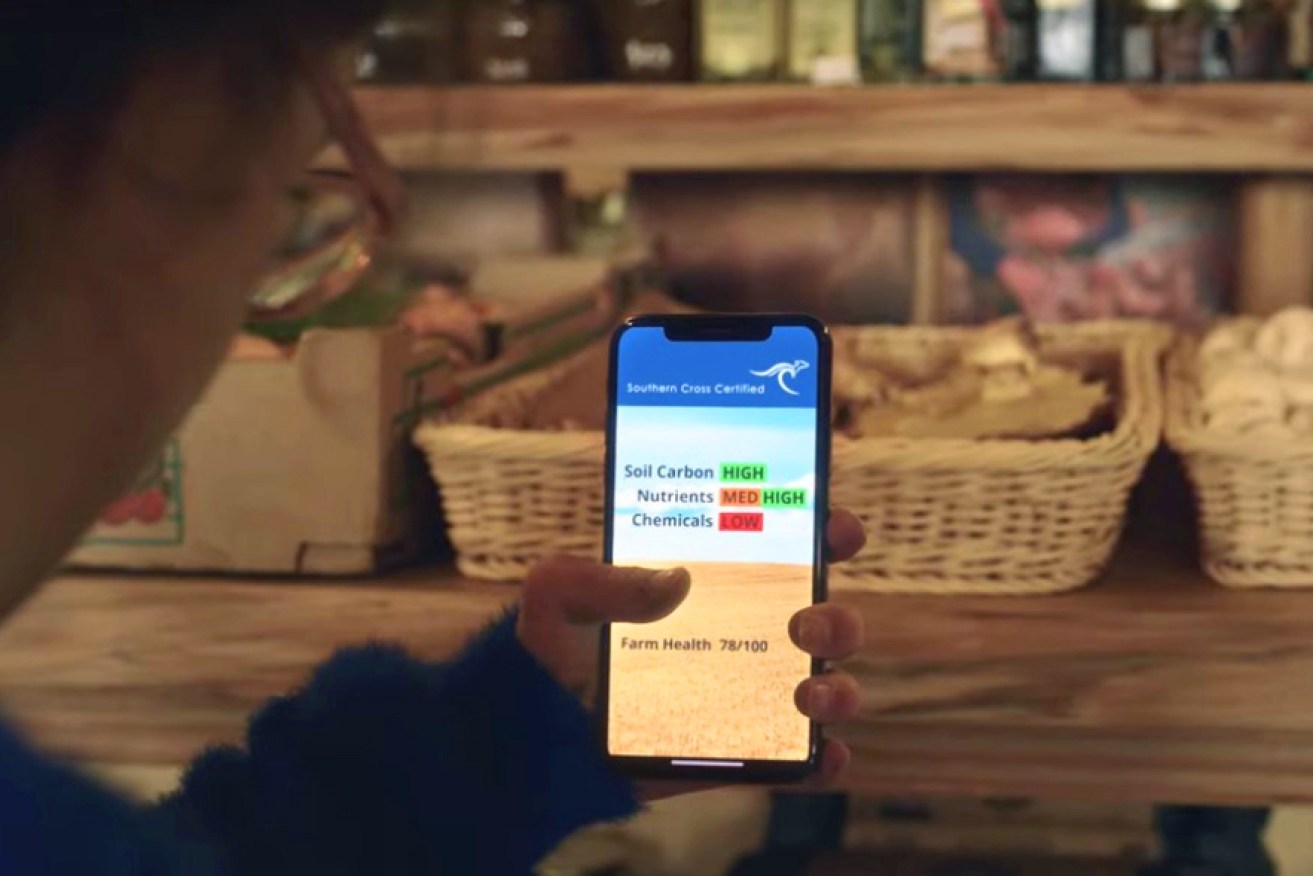
A scene from Regenerating Australia, which imagines a future focused on the wellbeing of communities.
In his latest offering, filmmaker Damon Gameau asks ‘What would Australia look like in 2030 if we simply listened to the needs of its people?’ Featuring a host of well-known political and media identities, Regenerating Australia is a 17-minute mockumentary set on New Year’s Eve 2029, taking the form of news bulletins and press conferences looking back at the decade ‘that could be’.
We see what a high-speed rail network connecting regional areas and cities would look like, what large-scale wind, solar, battery and hydrogen projects would do for hundreds and thousands of employees, along with visualisations of the positive domino effects of urban and rural landscapes coming to life through regenerative agriculture, cultural reconciliation and urban regreening. While the tone is light, the message is serious, with each news event grounded in existing research and modelling of those scenarios.
Planning for the future of Adelaide could start with the same question: what would Adelaide look like if we simply responded to the true needs of our population?
We are already seeing a worldwide shift in thinking from planning for growth to planning for ecological and cultural wellbeing and shared prosperity. This is the core concept at the heart of Kate Raworth’s ‘doughnut economics’ framework, where the challenge is to meet the needs of all within the means of the planet’s life-supporting systems on which we all fundamentally depend. According to the global regenerative movement, the ‘doughnut’ of these social and planetary boundaries provides a conceptual compass for measuring human progress this century.
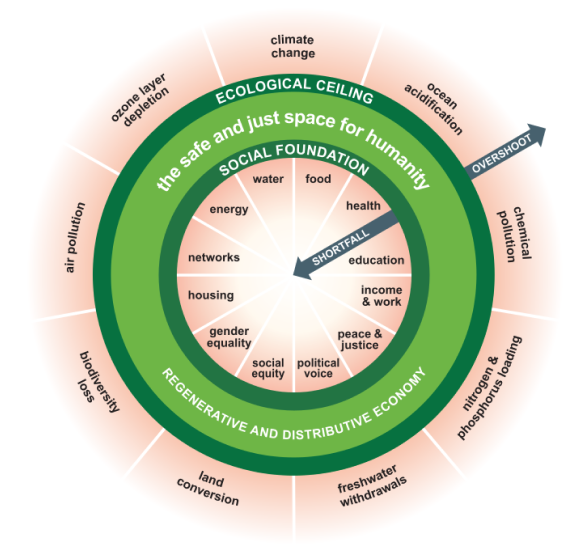
The doughnut economics diagram. Source: Kate Raworth
The regenerative movement is already taking root here on many levels, with Green Adelaide’s National Park City a key state government initiative. A new online platform has also recently emerged to nourish and nurture the ecological and cultural ‘green shoots’ that are appearing across the South Australian landscape. RegenADL+ has been formed by a group of individuals and enterprises determined to support innovations that might accelerate this transformative process.
Trish Hansen and Renee Farrow are two of those individuals, and their ReWonder CoLab is one such enterprise. Conducted over two hours in Adelaide’s Botanic Gardens, their interactive and immersive workshops aim to shift perspectives and encourage people and organisations to view the world differently, to make more considered decisions in the context of existential threats, and to be genuinely regenerative in their relationships with the natural world.
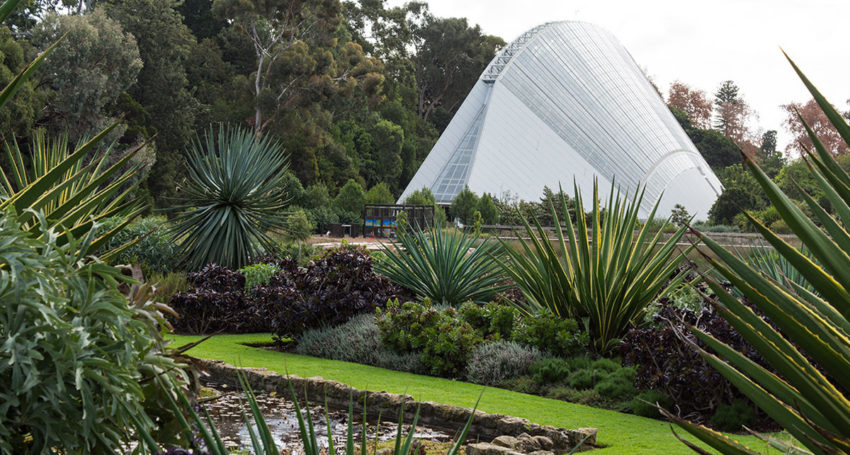
The Bicentennial Conservatory in the Adelaide Botanic Garden.
Trish explains another useful concept in thinking about the future. The ‘Three Horizons Framework’ was co-created by Bill Sharpe, an expert in futures techniques at the Scotland-based International Futures Forum (IFF). Evolved from an earlier business innovation framework, the model offers a simple way of examining current dominant systems and their challenges (horizon 1), the desired future state (horizon 3) and the innovations that can help achieve the future vision (horizon 2).
Sharpe calls horizon 2 “the gentle art of redesigning the plane whilst flying it”. According to futures practitioners at the IFF: “The system is telling us that from where we are now, horizon 1, to move to horizon 3 we need a bridge, and that is innovation … in the same way that electric cars are forming a bridge from the internal combustion engine to a future, clean, global transport system.”
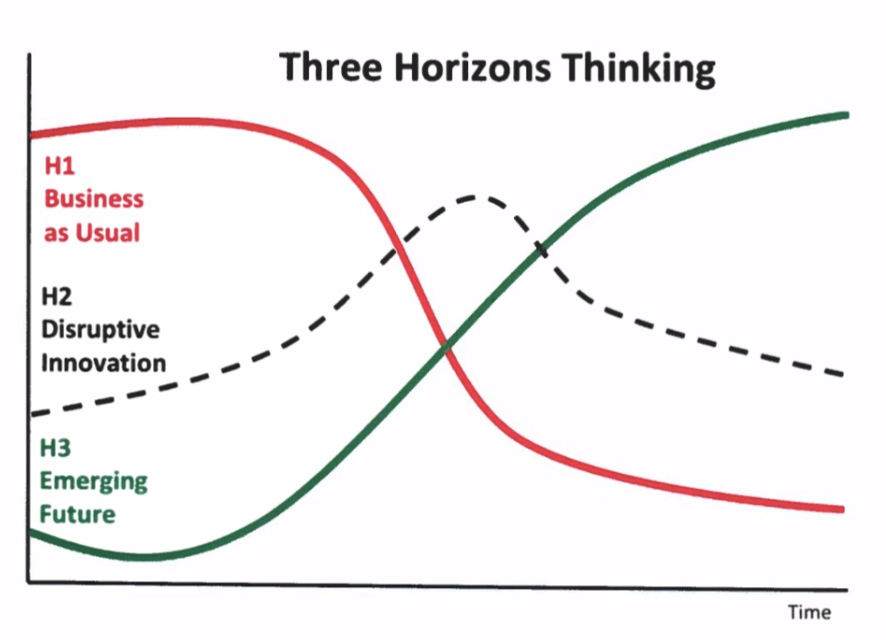
The Three Horizons Model. Source: Bill Sharpe
Chief Executive of the Australian branch of the World Wildlife Fund, Dermot O’Gorman, is advocating for a regenerative revolution to replace the extractive industrial revolutions of the 20th century.
“We have many of the solutions at hand, in the form of global science, collaborative options, and incremental technologies,” he says. “We must put them into action at scale and in a way that mitigates some of the unforeseen consequences and unintended impacts.”
The World Economic Forum describes this revolution as representing “a new chapter in human development… merging the physical, digital and biological worlds and fusing technologies in ways that create both promise and peril”.
The concept of a circular economy based on regenerating, reducing, reusing and recycling (rather than extracting finite resources) is of particular relevance to the building and construction industry, which at last count was notoriously responsible for 36% of the world’s energy use and 39% of its CO2 emissions. Eleven per cent of these came from embodied energy in manufacturing materials and products such as steel, cement and glass.
The need to reduce embodied energy is leading to the development of lower impact materials, many of them inspired by or generated by biological processes. The rapid changes, disruptions and existential threats of the 21st century are also calling for regenerative urban and rural environments that benefit both humans and the natural world.
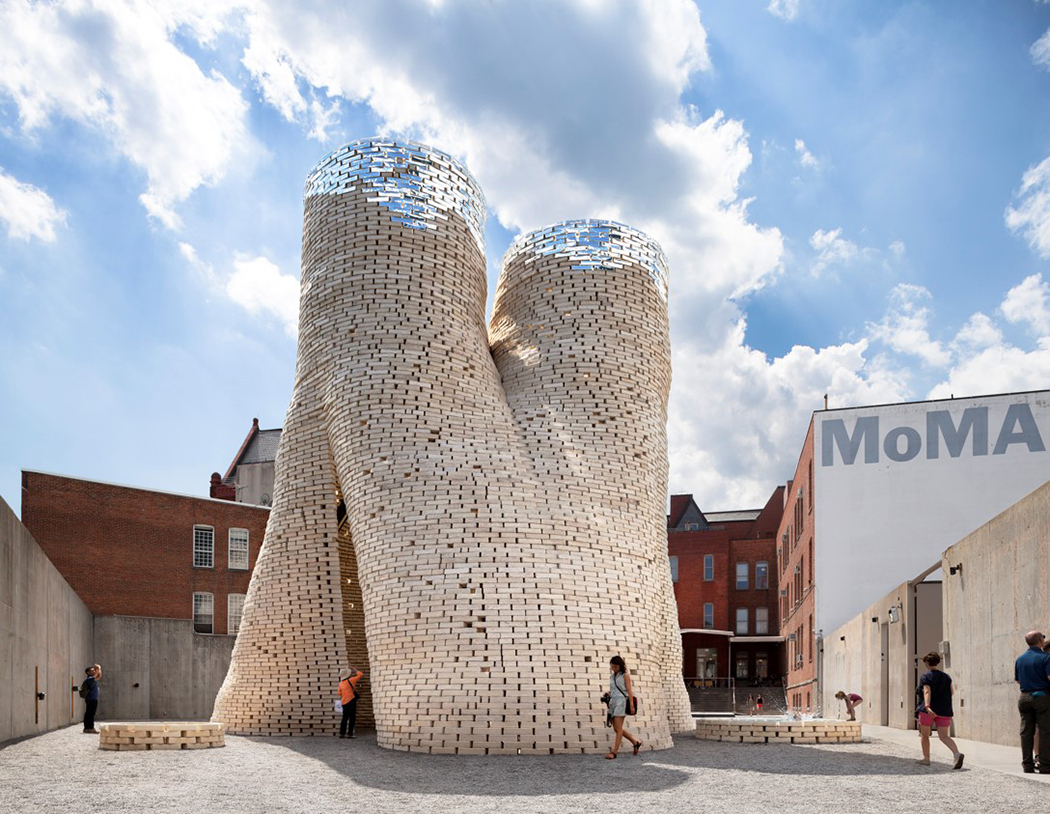
Grown from mycelium (fungi fibre), the Hy-Fi pavilion at MoMA PS1 demonstrates the potential of biological processes to manufacture construction materials and even whole buildings. Source: The Living
Biodiversity McLaren Vale (BMV) is another local initiative informing the regenerative revolution. A collaborative effort of community, industry and government, the project involves hundreds of volunteers from across Adelaide who turn up each month to remove feral vegetation from the main creek lines within the McLaren Vale food and wine region, replacing them with native plant species.
Volunteers and local landowners nurture these new seedlings until they are established, and then watch as the new environment flourishes and essential native fauna returns to the area.
It’s a satisfying process to observe, say local farmers and BMV co-founders Geoff Hayter and Jock Harvey. Another local, Gavin Maloney, has more recently brought a bicultural perspective to the landscape restoration project, involving the cultural, spiritual, ecological and economic regeneration of local Kaurna custodians.
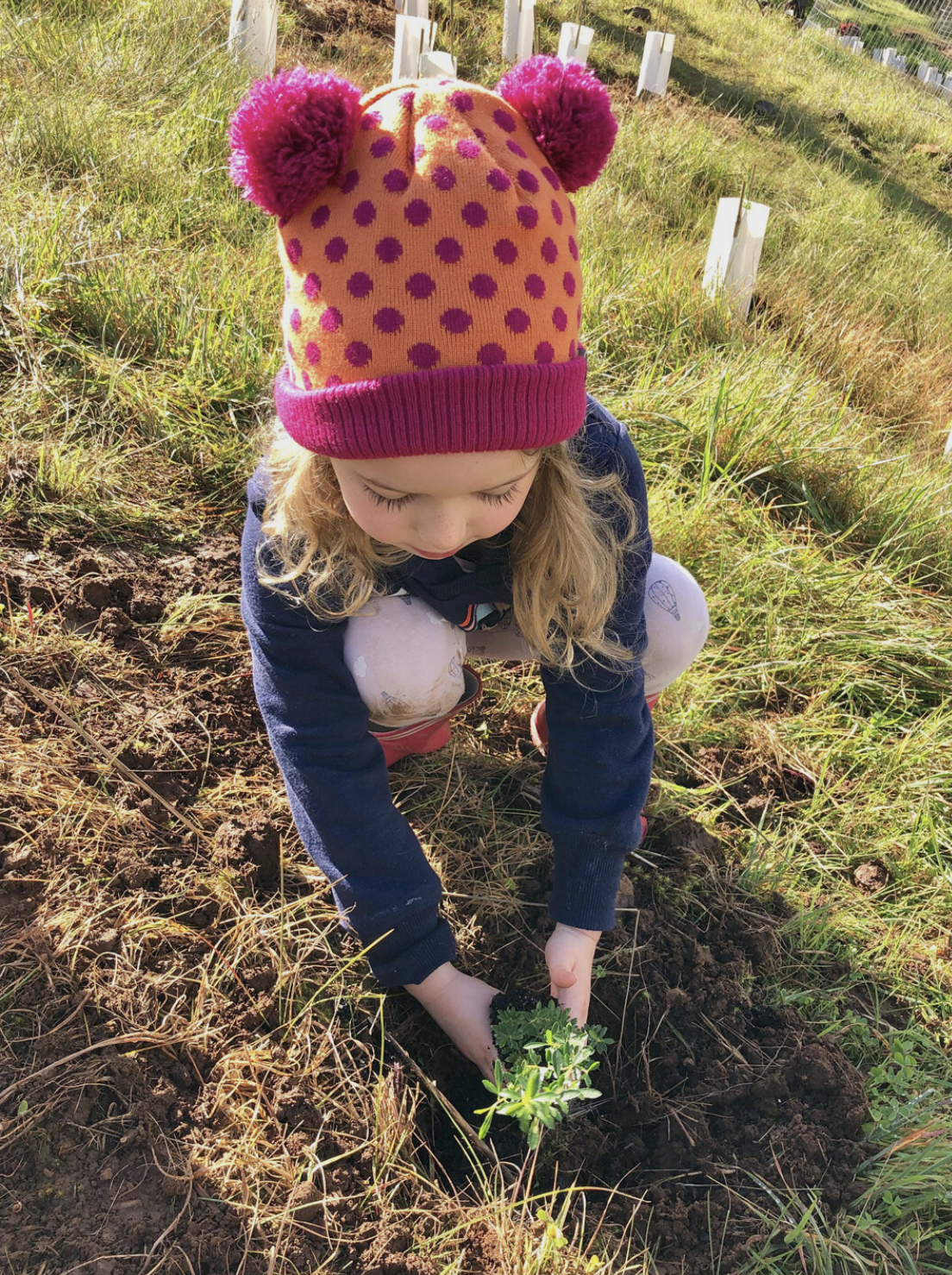
A young BMV volunteer planting the future (Source: Biodiversity McLaren Vale)
Further south in the Alexandrina local government area, the council has been experimenting with an innovative form of futures planning involving more than 1800 participants from across the council.
Dubbed the ‘community bible’, the resulting A2040 plan used the art of collaborative storytelling to project a forward-looking, place-based, future for the community, addressing social, economic and environmental challenges.
Wellbeing manager Kathryn Gallina designed a series of two-week engagement periods in eight ‘village’ locations for locals to share their thoughts, fears, ideas, and solutions to those challenges. Based on the principles of co-design, these ‘Village Conversations’ are now being used to authentically develop Village Innovation Plans (VIPs) for each locality.
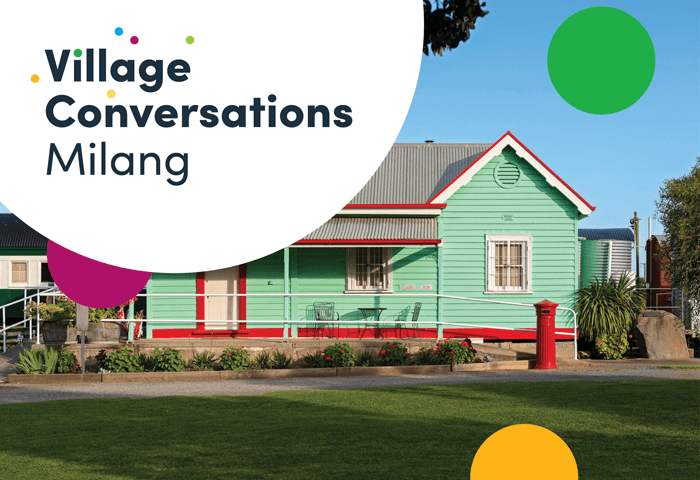
Alexandrina Council’s Village Conversations are informing Village Innovation Plans for eight regional locations (Source: Alexandrina Council)
A recent city gathering timed to coincide with the current local government elections highlighted the important role of an integrated transport and land use plan in underpinning a truly regenerative and forward-looking city.
The newly formed Transport Action Network (TAN) is lobbying all levels of government to improve the quality of transport planning here, and to move funds away from mega-road projects towards a wider range of transport and infrastructure programs that better consider social, environmental and health impacts.
TAN spokesperson and transport academic Dr Jennifer Bonham pointed out that there are currently too many disjointed plans for Adelaide and its regions, and not enough integrated vision informing this important space.
Nearly a decade on from the city’s last integrated transport plan, it might be time to review and reintegrate in order to regenerate.
Regenerating Australia will be screened at Good Grapes and Grub: Protecting the environment and understanding your wine on Tuesday 20th September from 6pm – 8.30pm at Bowden Cellars, Plant 3 – Red Shed Lane, Bowden. Tickets are available here.
Stephanie Johnston is an urban planner and member of the State Planning Commission. The views expressed here are her own.




